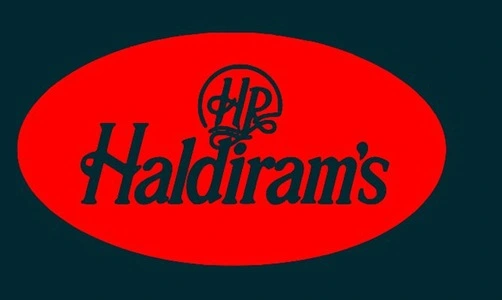Haldiram’s stands as a shining example of how a homegrown Indian brand can evolve from humble origins into a powerhouse in the global food landscape. Starting in 1937 in Bikaner as a small bhujia shop, it has grown into one of India’s most trusted snack and sweet manufacturers—today valued at nearly US $10 billion. Recent strategic investments by Temasek, Alpha Wave, and IHC, coupled with the unification of its Delhi and Nagpur operations into Haldiram Snacks Food Pvt Ltd, signal a brand poised for accelerated domestic expansion and global reach. This SWOT breakdown explores the key internal and external forces shaping Haldiram’s next chapter.

Strengths
1. Powerful Brand Legacy
Haldiram’s enjoys deep-rooted brand equity across India. Known for quality, reliability, and authentic taste, it commands high recall among consumers—reinforced by a portfolio of over 400 products spanning namkeens, sweets, RTE meals, cookies, and beverages.
2. Diversified Product Range
From its signature Aloo Bhujia and Moong Dal to Gulab Jamun, frozen parathas, and Minute Khana curries, Haldiram’s caters to a broad consumer base. Its foray into healthier, millet-based snacks and baked variants highlights responsiveness to evolving consumer preferences.
3. Robust Supply Chain & Distribution
Boasting production units in Kolkata, Jaipur, Delhi, Nagpur, and Noida, Haldiram’s ensures efficient supply across India and exports to 100+ countries, including the US, UK, UAE, Australia, and Canada .
4. Prime Financial Backing
With March 2025 investments from Temasek (~10% stake at US $10 billion valuation) and subsequent minority stakes taken by Alpha Wave and UAE-based IHC, Haldiram’s is well-funded for global expansion and innovation.
5. Unified Corporate Structure
The consolidation of Delhi and Nagpur branches into Haldiram Snacks Food Pvt Ltd improves operational coherence and brand synergy—clearing the way for unified strategy and stronger market positioning.
Weaknesses
1. Concentrated Outlet Footprint
While its packaged snacks enjoy pan-Indian availability, Haldiram’s physical restaurants remain heavily concentrated in North India, limiting broader brand touchpoints nationally.
2. Underutilized Marketing
Despite stellar brand recognition, Haldiram’s invests relatively less in ATL/BTL marketing compared to FMCG competitors. This presents an opportunity missed to connect more dynamically with a younger, digitally-savvy audience .
3. Perception As “Unhealthy”
Some consumers view Indian snacks as high-calorie or oily. Without clear branding around its newer health-conscious lines, Haldiram’s may lose appeal among wellness-driven segments .
Opportunities
1. Pan-India & Rural Expansion
Expanding restaurant and retail footprint beyond North India into Tier II/III towns can unlock substantial market share in under-served regions .
2. Health & Innovation
Rollout of low-oil, baked, millet-based, or organic snacks aligns well with global health trends. Behind-the-scenes transparency, certifications, and dedicated branding could enhance credibility .
3. Global Reach Boost
With strong international investment support, Haldiram’s can scale outlets and packaged distribution in diaspora-heavy markets like the US and Middle East—leveraging its universal appeal .
4. Digital & Quick Commerce Channels
Expansion via e-commerce, delivery apps (Swiggy, Zomato, Zepto), and digital-first marketing can make Haldiram’s offerings more accessible and engaging for urban and youth consumers.
5. Strategic Events and Partnerships
Collaborations with lifestyle brands, festival tie-ins, or celebrity endorsements could lend freshness to the brand and attract younger demographics without alienating heritage-loving consumers.
Threats
1. Intense Competition
The FMCG snack space is crowded with Indian players (Bikaji, Bikanervala), international brands (PepsiCo, Mondelez), and local regional vendors. Rising competition could pressure prices and innovation.
2. Shifting Consumer Preferences
Urban Indians are increasingly leaning towards Western snacks or health-forward diets. Without aggressive repositioning or healthier ranges, Haldiram’s may risk losing brand loyalty.
3. Regulatory & Quality Challenges
Stringent food safety standards and packaging regulations (e.g., plastic restrictions) can increase compliance costs.
4. Macro-Economic Instability
Rise in raw material costs (oil, pulses), inflation, or supply disruptions could squeeze margins—though strong investor backing may help absorb shocks.
Strategic Recommendations
| Priority | Action Area | Suggested Initiative |
| High | Market Expansion | Launch 100+ new outlets in Tier II/III and South/West India |
| High | Brand Messaging | Introduce lifestyle-focused marketing campaigns showcasing health variants |
| Medium | Global Growth | Open flagship stores and local partnerships in GCC and North America by 2026 |
| Medium | Digital Push | Strengthen D2C e‑commerce, loyalty programs, and digital ad presence |
| Long-Term | Sustainability | Shift to eco-friendly packaging and highlight it in branding |
Conclusion
Haldiram’s journey from a small Bikaneri namkeen shop to a US $10 billion FMCG juggernaut is a story of sustained brand trust, product innovation, and strategic expansion. Supported by top-tier global investors and a unified business structure, it is well-positioned to capture new markets—especially through healthier product lines, wider geographical reach, and digital engagement.
By elevating its marketing, expanding thoughtfully, and targeting evolving tastes, Haldiram’s can not only retain its heritage appeal but also emerge as the face of modern Indian snacking—globally. It’s a tasty future indeed!

Meet Suhas Harshe, a financial advisor committed to assisting people and businesses in confidently understanding and managing the complexities of the financial world. Suhas has shared his knowledge on various topics like business, investment strategies, optimizing taxes, and promoting financial well-being through articles in InvestmentDose.com


